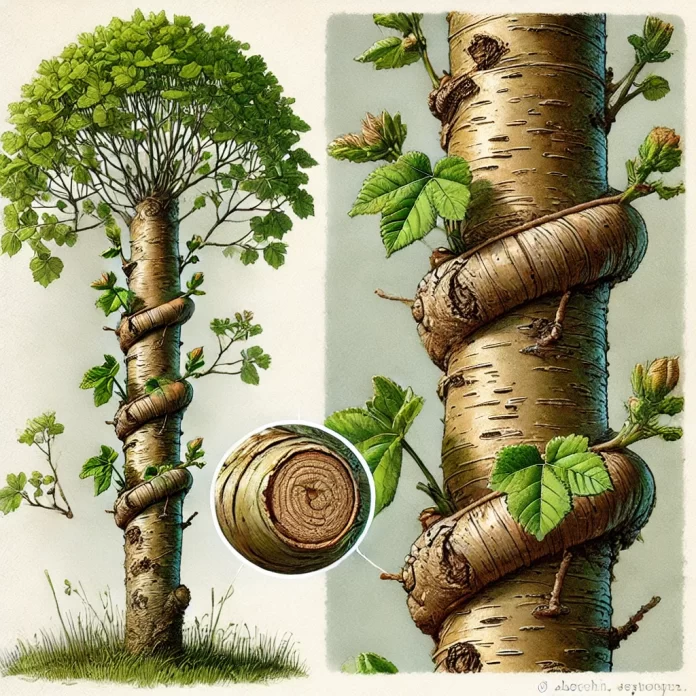Definition
Bark-Bound (Physiological Condition in Trees and Shrubs)
Bark-bound, also known as girdling or constricted bark syndrome, is a physiological condition affecting trees and woody shrubs in which the bark becomes excessively tight around the trunk or branches. This restricts normal vascular function, impeding the flow of water, nutrients, and carbohydrates between the roots and foliage.
Causes
- Rapid Growth: In some species, especially those with smooth bark, rapid expansion of the trunk may cause the outer bark to fail to split and expand naturally.
- Environmental Stress: Drought, temperature fluctuations, and compacted soil can reduce a tree’s ability to shed bark naturally.
- Improper Pruning or Grafting: Poor pruning cuts, tight graft unions, or incorrect staking methods can lead to bark constriction.
- Tree Ties and Supports: Leaving ties, wires, or straps in place for too long can lead to girdling, restricting sap flow.
- Pest and Disease Damage: Some insects or fungal infections may cause bark to tighten abnormally due to callusing or scar tissue formation.
Symptoms
- Reduced leaf size and chlorosis (yellowing).
- Declining vigor, weak or stunted growth.
- Dieback of branches above the affected area.
- Cracked or splitting bark in severe cases.
- Increased susceptibility to pests and diseases.
Prevention & Management
- Regular Inspection: Check young trees for signs of constricted bark, particularly around graft unions and supports.
- Correct Planting Techniques: Avoid planting trees too deep, which can contribute to poor bark expansion.
- Careful Staking & Tying: Use loose, flexible ties and remove supports once the tree is established.
- Selective Bark Scoring: In mild cases, gently scoring the bark with a sharp knife can encourage expansion and prevent severe restriction.
- Proper Watering & Mulching: Providing adequate moisture and using organic mulch helps maintain healthy bark development.
- Avoid Overfertilization: Excess nitrogen can lead to excessive growth that outpaces natural bark expansion.
Affected Species
- Young, fast-growing trees such as Acer (maples), Prunus (cherries and plums), and Betula (birches).
- Some tropical and subtropical species with thin or delicate bark.
- Trees with smooth bark, which are less able to naturally shed constrictive layers.
Related Conditions
- Girdling Root Syndrome: A separate issue where roots encircle the trunk and constrict vascular function.
- Sunscald: Damage to the bark due to sudden temperature changes, sometimes causing peeling and tight bark.
- Corky Bark Disorder: A condition in some fruit trees where the bark becomes excessively thick or woody.
Bark-bound trees can often be managed successfully with early intervention, ensuring continued health and vigor in the landscape.




